#fire nation citizens
Explore tagged Tumblr posts
Text

Maiko Week 2024.
Day 2: Separation.
#maiko week 2024#maikoweek2024#maiko week#zuko#mai#atla mai#fire lord zuko#fire nation citizens#dianorayasiri#illustration#avatar the last airbender#atla#avatar the legend of aang#art#artists on tumblr#el niño#turtleducks#digital art#maiko#atla maiko
942 notes
·
View notes
Text
I’ve been thinking about The Promise again, and it’s really interesting to me how the narrative tries to frame Zuko as the “dark” character once again, despite the fact that Aang was the one considering banning interracial relationships and supporting the Earth Kingdom in invading Yu Dao (which most of the people living there did not want).
In canon, Aang only changed his stance on interracial relationships after realizing it would affect him personally. But consider this—what if Katara wasn’t interested in Aang at that point. What if she was with someone else?
It would be interesting to explore how that would change the plot.
#also people act like zuko wanted to reclaim yu dao for the fire nation#he didn’t#he was responding to kuei trying to take over#at the request of the yu dao citizens#if anything he was fighting for their independence#but yah sure he’s the evil dark edgy character#atla#atla comics#zutara#zuko#aang critical#canon critical#anti kataang#avatar the last airbender
184 notes
·
View notes
Text
i wish that there was more time between the day of black sun and sozin's comet bc zuko's official desertion from the fire nation would have the most insane ripple effects (and it would be nice to see the gaang interacting a bit more than we got but hey i'll take what i can get)
zuko's desertion would have been essentially impossible for the fire nation to bury since it was such a big deal that he returned at all. so i imagine the smear campaign against zuko would have been craaazy. i think it would have been interesting for the gaang to try and deal with that when navigating the FN. zuko would be very recognisable i think at this point, and it would have made staying hidden much harder. would they still have chosen ember island? maybe the kids didn't recognise zuko and azula during The Beach , but with the prince of the fire nation committing treason would there be more wanted posters? would there be more talk around the island? would zuko have to remain hidden while the rest go out and get food?
i wonder if zuko deserting and very meaningly committing his loyalty to the avatar influenced other soldiers in the FN to also desert? or would it have had the opposite effect and made people feel more patriotic since zuko was banished, returned under the guise of having killed the avatar, and then left when aang announced his survival to world during the failed invasion?
SPEAKING OF THAT!! the rumours around this would be INSANE. we know what really happened, but the public don't. did zuko and the avatar plan this so that there would be an inside man during the invasion and then zuko used that chaos to escape? what really happened in ba sing se if zuko didn't kill aang, but azula thought that he did? (again: we, the audience know the truth, but the general public don't). if zuko and the avatar where working together... for how long? was iroh involved somehow since he also disappeared the same time that zuko did? did iroh get captured on purpose to be close to zuko to possibly help him if needed? did zuko break iroh out of jail or did one of the guards or was iroh alone? you could spiral on this as just an average person in the avatar world for years like. if youtube existed in atla imagine the video essays breaking down all the conspiracies
its a kids show so obviously Nothing Bad Happened BUT in the Boiling Rock, zuko getting found out as not only an imposter (already, a very bad situation), a traitor (extremely bad), AND the traitorous (ex) prince of the fire nation (devastatingly terrible) would have been... incredibly dangerous for zuko. in zuko and iroh's original wanted poster, the official translation says “Permission is granted to kill them on sight” and this was before zuko has gone right ahead and committed Treason On Purpose. the warden is not going to be nice. when the warden visits zuko in his cell he literally tells him "If these criminals found out who you are, the traitor prince who let his nation down, why they'd tear you to shreds." the boiling rock would be hell trying to survive. it also puts a lot more weight on zuko refusing to leave sokka in their first escape attempt. also ozai obviously knew that he has his son was in prison bc he... broke in to the prison bc azula was there but then zuko manages to escape with sokka (another imposter) and suki and hakoda (POWs) and chit sang (a prisoner) and two of azula's trusted friends end up in prison for treason as well i just. that is literally insane for the average person to hear about. again, THE CONSPIRACIES!!
when zuko eventually does take the throne there's a lot of conjecture around what zuko did while he was banished and moreso, what he did the second time he left, this time voluntarily. i think zuko's loyalty would be questioned a lot; by other world leaders who are understandably wary about the fire nation and its motivations, but also by its own people - some who believe that zuko is a traitor to his country and is trying to sabotage it since he helped end the war.
idk these are all just me rambling but it would been so interesting to explore the implications of zuko leaving the fire nation and how that would have impacted the gaang and how they interacted with others in their travels. there are so many fic where zuko joins the gaang early, but neither myself with the aus that I have written, nor many that ive read have explored this very much or at all.
#this is basically a thought stream#zuko#sokka#aang#katara#toph#the gaang#book 3#i think that like.... zuko leaving would have been crazy. it should be the talk of the town!#the gossip mill would have been on OVERDRIVE#it also makes it so hard bc no one knows what the truth actually is#one day in court as fire lord one of the foreign dignitaries is like ummm fire lord is it true that you systematically#robbed upper class earth kingdom citizens to help fund local militia groups to take back land occupied by the fire nation#and like zuko is just sitting there like WHAT#zuko: yes i did rob people.#the foreign dignitary: 👁️👄👁️#avatar the last airbender#atla#the boiling rock#the day of black sun#the firebending masters#hattie talks
332 notes
·
View notes
Text
i think all the time about the line "in what year did fire lord sozin defeat the air nation army" and then aang responding "is this a trick question? the air nomads didn't have a formal army" and the implications of the history that the fire nation had been rewriting for a century. the implication that the air nomads (a peaceful nation) weren't brutally ambushed, but rather that they were ready to fight and may have even been eager to do so. absolving the fire nation of some of the guilt in a total genocide and painting the narrative that the air nomads were ready to defend themselves and/or that the attack on the air nomads was anything but a one sided ambush. i think about it a lot.
#this scene in particular actually devastates me in a visceral way#because it is ONLY aang alive now to remember first hand that the air nomads didn't have a formal army#that it was part of their principles and their cultural identity to NOT have one#that the air nomads largely preached pacifism#and he's the only one alive able to refute the history that the fire nation rewrote based on his own first hand testimonies.#almost everyone else who could do that is dead#and of course.. other nations know it was a brutal attack.. but there's something so deeply sinister#about the implication that aang is from the colonies followed by that scene#because it means that this is a conscious effort to indoctrinate not just fire nation citizens... but the PLANET#and aang is literally the only person who can refute it.#MAN.#i love atla
77 notes
·
View notes
Text
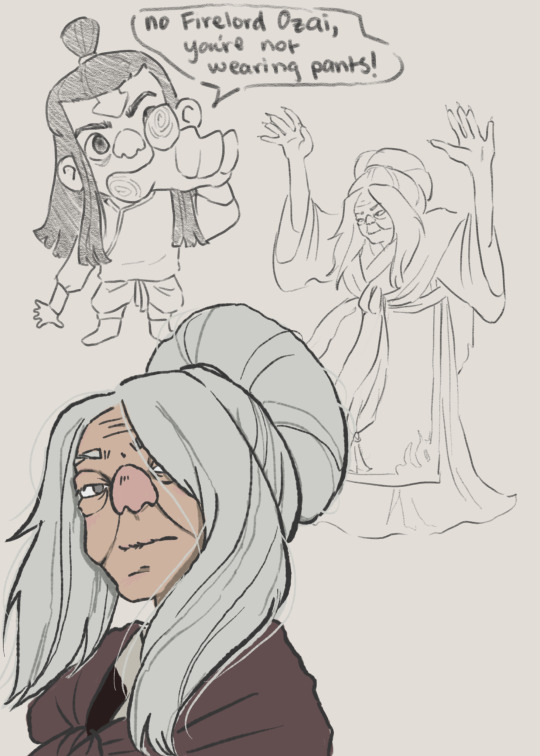
rewatching atla and i am a hama apologist at my core
#when she kidnapped all those fire nation citizens for her brothers and sisters#but literally left them to die when she escaped#slay queen#art#my art#digital art#atla#avatar the last airbender#avatar fanart#hama atla#aang#atla aang#aang fanart#atla fanart
40 notes
·
View notes
Text
June was the only woman older than Katara and Suki to show up and help the Gaang in the finale and I think that’s ridiculous. We could have seen Yagoda and the Herbalist in the White Lotus (and Miyuki!! She has a cute miniature lotus collar). Perhaps even Haru’s mom showing up somewhere?? IDK the lack of older ladies as respected guides and teachers is irksome and until further notice I’m headcanoning out of spite that they were there we just didn’t see their scenes but they were there dammit
#atla meta#look I love the old men#they are such blorbos#but Yagoda and Hama as teachers?#they really got the short end of the stick#Yagoda gets forgotten even when Katara becomes a successful healer bc Katara didn't want to go to her class therefore the class sucked#which is ass#and then Hama was a victim of the Fire Nation who began harming citizens and forced Katara to learn a perverse sub-bending ability#don't get me wrong I love the ideas for bloodbending especially the thought of it as a medical aid but the way it was introduced#and forcing Katara to learn it the way she did was traumatic to her#We get barely any lady teachers older than the girls in the Gaang and that's really sad#and this sort of ties into Ursa's lack of complete character and the lack of guiding maternal figures#and how there's hardly any mention of the wives and mothers in the FN royal family and their characters#whoops I'm starting to ramble
198 notes
·
View notes
Text
The fact that I always go back to the original ATLA every time a live action reboot comes out shows just great this show’s writing was
#I don’t usually say this about shows from the early 2000s#(especially ones with minorities)#but atla is genuinely one of the best shows ever#there’s so much heart put into it#so many things to still find in the show 20 years later#and I really love the commentary about the fire nation#the fact that the show actually took time to show you that the lower class fire nation citizens#are actual people that don’t even support the war#and that it’s actually a monetary drain on them is superb writing#there’s shows that don’t even do that today#but it’s things like THAT that make the show amazing and timeless
5 notes
·
View notes
Text
The Trump v. Biden debate made me wonder if that’s what the fire nation felt like when Azulon was Firelord

#atla#avatar the last airbender#azulon#fire lord azulon#IT CAN EVEN APPLY TO SOZIN AND ROKU#just two old ass guys beefing#y’all if I was a fire nation citizen#and azulon was my fire lord I would just leave#BRO LIVED FOR LIKE THE ENTIRE WAR#they didn’t even need to burn bro atp he was alr turning to ash every time he moved#sorry I feel like bullying azulon tonight
6 notes
·
View notes
Note
Mind telling us more about that little anecdote of when Zhao shot you with a poisonned arrow by accident? Was it very epic and suspenseful? What did you do with the poor wretch after?
It was a wonderful day at sea, and we were on our way to the Colonies to bring the progress and prosperity of the Fire Nation to those peasants who needed it so desperately. Zhao and I were fifteen, and Michi fourteen. There was no enemy nearby and no town to conquer, so the crew was pretty bored.
As a result, we decided to fortify our temper, character, and mental and physical abilities in the traditional way among youngsters recently graduated from The Royal Academy: by playing Truth or Dare.
Is there a greater exercise to demonstrate your skills than Truth or Dare? If so, as young warriors of the Fire Nation we did not know it. There is no other game whose main goal is to impart the greatest amounts of humiliation to your enemies and avoid it at all costs.
So we sat in the bow and our skills test began. I could not let anyone beat me at that game, the rest of my life depended on that moment. So an hour later, I had made the captain jump overboard, Admiral Jee eat a bra, and Michi admit that she still slept with a stuffed toy. I was ruthlessly tearing my adversaries apart, subjecting them to endless shame like a good Prince would. But then it was Zhao's turn, and he chose me. Thinking carefully about his strategy, I chose truth, as Zhao's challenges were almost as efficient as mine (he once challenged Michi to jump off a cliff). And so he did it. He attacked in the worst way. He almost won at that moment, humiliating me in front of my entire crew in a direct attack on my honor.
He made me admit that Iroh used to change my diapers.
I nearly incinerated Zhao at that moment, before forcing myself to calm down. I had to beat him within the rules of the game or I would lose my honor for the rest of my life, and Agni would not receive me in his holy halls when I died. (I was young and inexperienced, and I didn't think of cheating at the time. Ursa would have poisoned Agni). In the next round, I chose Zhao and he chose dare. That was my chance. So I challenged him to dodge one of Michi's poisoned arrows.
It was impossible and everyone knew it. Nobody is faster than Michi's arrows. However, I would like to make it clear that my intentions were not to kill Zhao, as he was still my teammate and perhaps the closest I've ever had to a friend. I just wanted to humiliate him for life, break his spirit and his honor, and reduce him to a pathetic puppet with no will of his own, nothing he couldn't survive to.
So Zhao stood up and, knowing full well that he would not be able to dodge the arrow, he took a bowl of cereal and began to eat, perhaps believing that he would soon be having breakfast with Agni. Michi took her bow and shot, and evidently, Zhao didn't dodge the arrow. It bounced off the bowl of cereal and headed my way, sinking into my royal right buttock.
I was delirious from the arrow poison for almost a week. Everyone had the good sense to never speak of the incident again, except for one of the new soldiers who I soon silenced forever in an Agni Kai. How is Zuko going to defend his honor if someone makes fun of him for getting shot in the butt? I bet he didn't think of that when he banned Agni Kais.
#We fire nation citizens have our more dangerous ideas when we're bored#Probably that's how Sozin decided to start the war#ask ozai#Atla#avatar the last airbender#Ozai#Zhao#Michi
29 notes
·
View notes
Text
man i think the amon plotline is just kind of weak in terms of world building
#lok#i've seen posts discussing this with more nuance#but it's still so soon after the hundred year war#republic city is new too. only a generation old. majority of its population are either 1st or 2nd generation immigrants#or earth kingdom citizens or fire nation colonists who built what became the city during the war#and the way that bending is distributed among the population of every nation is entire random. it's an odd choice to mark it as a dividing#a dividing line. because every bender has family that are nonbenders and vice versa#and! add to that that unless you are trained just being born a bender isn't an intrinsic leverage over a nonbender. untrained benders#and benders without a lot of power exist. able to do party tricks and not much more#it likens to. people who's bodies are more naturally built to handle manual labour. it's just genetics and random luck#of course there could be interesting ways to tackle bender and nonbender dynamics especially with the religious significance of bending#and in mixed cultures how bending being passed on can be a surrfire way you are truly seen as carrying on that side of your culture#and it could be interesting seeing the culture shift as republic city is the first place to have such a wide mix of different cultures#in things like food and festivals#but a nonbender revolution (especially led by a bender like amon) is odd. like what is the goal of the revolution#bending and nonbending people can't be seperated in any meaningful way. and there are already laws and rules#prohibiting destructive bending use just as there are regular destruction#it's just. the revolution seeks to remove bending from the world. that's obviously a wild thing to say with cultures built around and with#bending as a part of them. add that to the fact that benders can be born from non-bending families and it just falls apart.
4 notes
·
View notes
Text
was watching the Legend of Korra w/ my sister (it's both our first times watching it) and the the villains of the season started talking abt anarchy and my sister and I were both like "he's actually right tho"
#damn korra maybe you should listen :/#he's kinda right tho what good have your governments done#the president of republic city constantly refuses to help#the earth queen forced her citizens into a secret army#we all know how the fire nation was in the 100 year war#stella rambles
3 notes
·
View notes
Text
I don't know if it's just my obsession with Fire Nation characters, or the fact that I just recently added four characters from the Beifong family, but I really want to add more Fire Nation muses. I just love everything Fir Nation related.
#ooc#/i honestly thought#/i'd have more waterbenders than i do#/I've just found that I write fire nation citizens really well
3 notes
·
View notes
Text
aang refuses let ozai force him to give up the last thing he has of his people
Baller line right here and yes. YES. If Ozai managed to get Aang to kill him, then the air nomads would've been extinct.
Dead religions are religions no longer practiced. Ancient Greek religious practices and cults are extinct. While there are Hellenistic revivals in modern times, there is no continuous thread between the ancient practice and modern revivals. The line was cut and has been for a long time, so we don't actually know a lot of the details of how religion was practiced back then.
To ask Aang to kill Ozai is to ask him to cut that continuous thread for his own people.
can't believe there are still people out here in the year 2023 that genuinely think aang should have killed ozai
#alta#I've also seen it mentioned that from a political perspective#the avatar rendering the firelord a nonthreat INSTEAD of killing him would help in terms of getting the fire nation's citizens#getting them to accept the end of the war#if he just killed him#then it looks like a regular coup#but letting the princess and firelord LIVE#would send a powerful message of wanting peace#and encouraging the violence to stop#aang's actions go against all the propaganda that the fire nation is taught#and make them realize that what they were taught was wrong#aang was doing it because he couldn't let the air nomads teachings die with him#yangchen said the avatar has a duty to the world#but aang also had a duty to his people#and by following the air nomads' teachings#he was able to get a fairly peaceful transfer of power for zuko
41K notes
·
View notes
Text
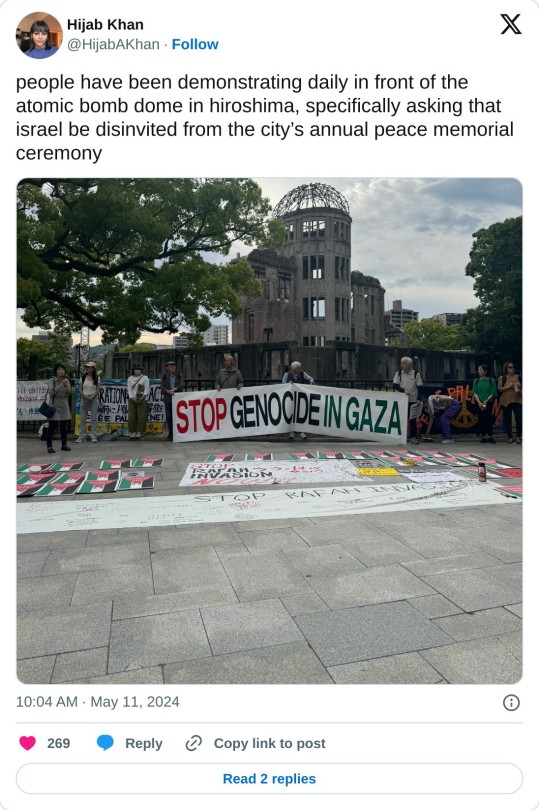
Close to four months since the conflict between Israel and the Islamist group Hamas began on Oct. 7, 2023, participants in the demonstration in Hiroshima's Naka Ward called to "free Palestine." More than 50 people, including members of a citizens' group that stands daily in front of the Atomic Bomb Dome demanding an end to bloodshed and attacks, walked down Hondori street shouting "Stop the massacre" and "Ceasefire now" among other slogans. They then held a rally in front of the A-bomb Dome.
A farmer in his 30s from the Hiroshima Prefecture city of Shobara commented, "No matter how hard a day I have (here in Japan), it would probably seem like paradise to the people of Gaza. We must take action beyond calling for a cease-fire, to bring the occupation to an end." A woman from Algeria, which was under French colonial rule for 132 years from 1830, said she came to the event because she felt that Palestine was suffering the same fate as her country. Participants also voiced anger and questions about the Japanese government's decision to suspend funding to the United Nations Relief and Works Agency for Palestine Refugees in the Near East (UNRWA) and the Hiroshima City Council's lack of resolutions regarding a cease-fire and other issues.
#yemen#jerusalem#tel aviv#current events#palestine#free palestine#gaza#free gaza#news on gaza#palestine news#news update#war news#war on gaza#japan#hiroshima#gaza genocide#genocide
10K notes
·
View notes
Text
What does life in North Korea look like outside of Pyongyang? 🇰🇵
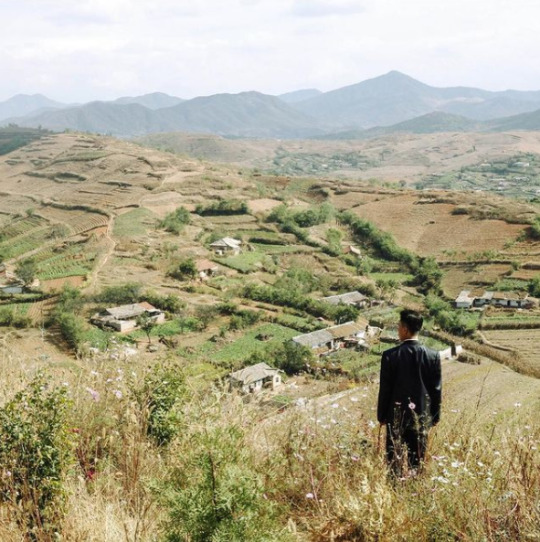
Hey, I'm back again with a very scary "tankie" post that asks you to think of North Koreans as people, and to consider their country not as a cartoonish dystopia, but as a nation that, like any other place on earth, has culture, traditions, and history.
Below is a collection of pictures from various cities and places in North Korea, along with a brief dive into some of the historical events that informs life in the so-called "hermit kingdom."
Warning: very long post
Kaesong, the historic city
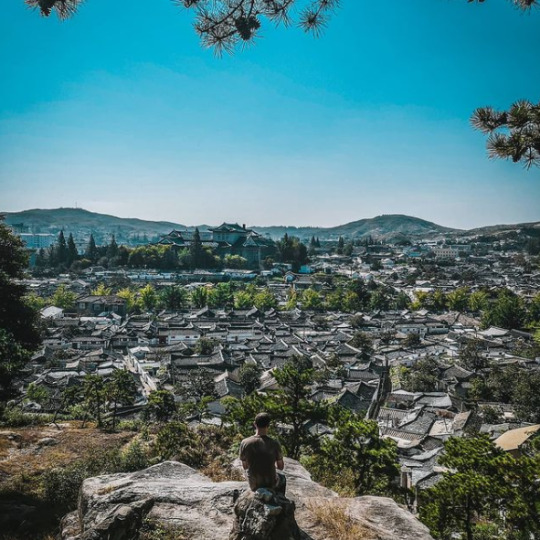
Beginning this post with Kaesong, one of the oldest cities in Korea. It's also one of the few major cities in the DPRK (i.e. "North Korea") that was not completely destroyed during the Korean war.
Every single city you'll see from this point on were victims of intense aerial bombardments from the U.S. and its allies, and had to be either partially or completely rebuilt after the war.
From 1951 to 1953, during what has now become known as the "forgotten war" in the West, the U.S. dropped 635,000 tons of bombs over Korea — most of it in the North, and on civilian population centers. An additional 32,000 tons of napalm was also deployed, engulfing whole cities in fire and inflicting people with horrific burns:
For such a simple thing to make, napalm had horrific human consequences. A bit of liquid fire, a sort of jellied gasoline, napalm clung to human skin on contact and melted off the flesh. Witnesses to napalm's impact described eyelids so burned they could not be shut and flesh that looked like "swollen, raw meat." - PBS
Ever wondered why North Koreans seem to hate the U.S so much? Well...
Keep in mind that only a few years prior to this, the U.S. had, as the first and only country in the world, used the atomic bomb as a weapon of war. Consider, too, the proximity between Japan and Korea — both geographically and as an "Other" in the Western imagination.
As the war dragged on, and it became clear the U.S. and its allies would not "win" in any conventional sense, the fear that the U.S. would resort to nuclear weapons again loomed large, adding another frightening dimension to the war that can probably go a long way in explaining the DPRK's later obsession with acquiring their own nuclear bomb.
But even without the use of nuclear weapons, the indiscriminate attack on civilians, particularly from U.S. saturation bombings, was still horrific:
"The number of Korean dead, injured or missing by war’s end approached three million, ten percent of the overall population. The majority of those killed were in the North, which had half of the population of the South; although the DPRK does not have official figures, possibly twelve to fifteen percent of the population was killed in the war, a figure close to or surpassing the proportion of Soviet citizens killed in World War II" - Charles K. Armstrong
On top of the loss of life, there's also the material damage. By the end of the war, the U.S. Air Force had, by its own estimations, destroyed somewhere around 85% of all buildings in the DPRK, leaving most cities in complete ruin. There are even stories of U.S. bombers dropping their loads into the ocean because they couldn't find any visible targets to bomb.
What you'll see below of Kaesong, then, provides both a rare glimpse of what life in North Korea looked like before the war, and a reminder of what was destroyed.
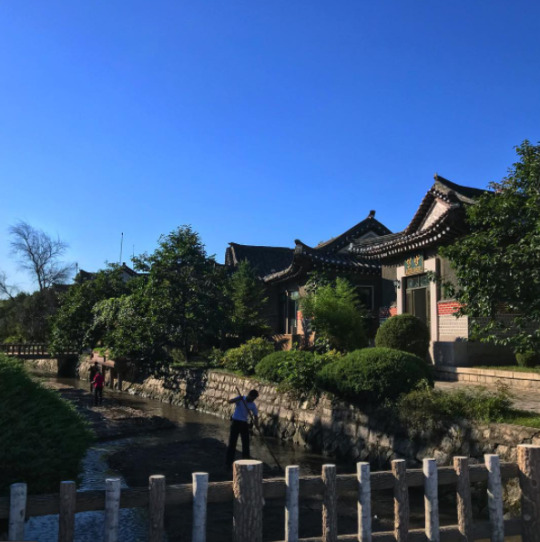
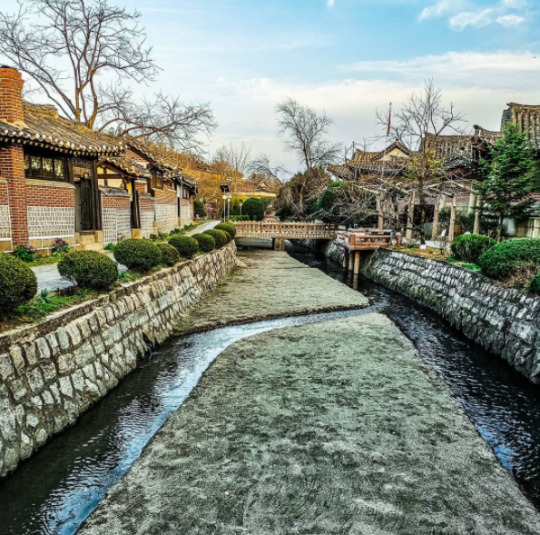
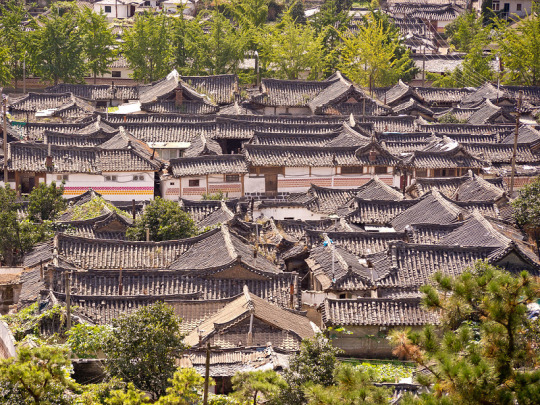
Kaesong's main street, pictured below.
Due the stifling sanctions imposed on the DPRK—which has, in various forms and intensities, been in effect since the 1950s—car ownership is still low throughout the country, with most people getting around either by walking or biking, or by bus or train for longer distances.
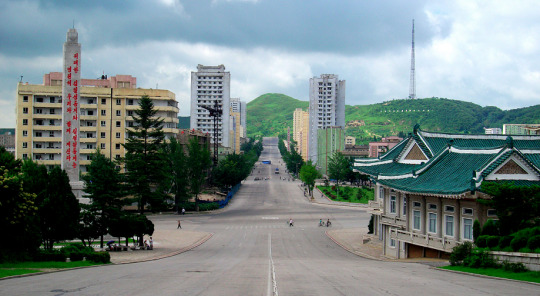
Kaesong, which is regarded as an educational center, is also notable for its many Koryŏ-era monuments. A group of twelve such sites were granted UNESCO world heritage status in 2013.
Included is the Hyonjongnung Royal Tomb, a 14th-century mausoleum located just outside the city of Kaesong.
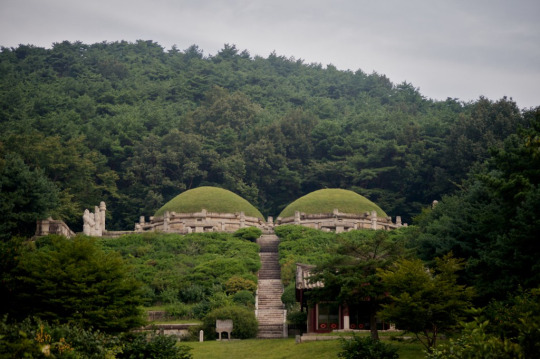
One of the statues guarding the tomb.
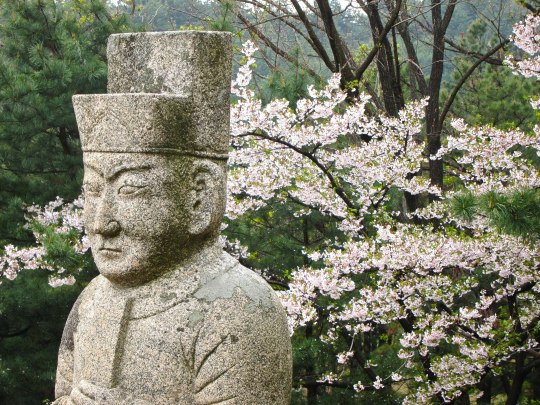
Before moving on the other cities, I also wanted to showcase one more of the DPRK's historical sites: Pohyonsa, a thousand-year-old Buddhist temple complex located in the Myohyang Mountains.
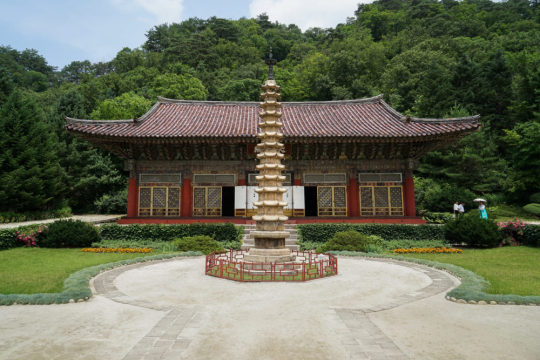
Like many of DPRK's historic sites, the temple complex suffered extensive damage during the Korean war, with the U.S. led bombings destroying over half of its 24 pre-war buildings.
The complex has since been restored and is in use today both as a residence for Buddhist monks, and as a historic site open to visitors.
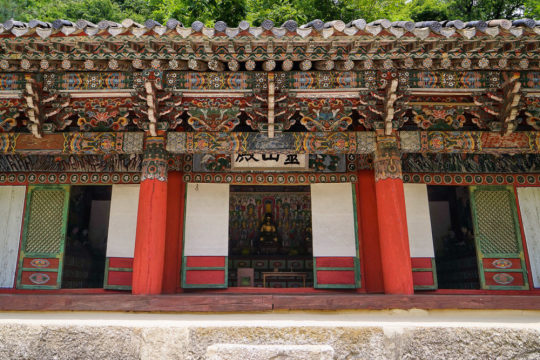
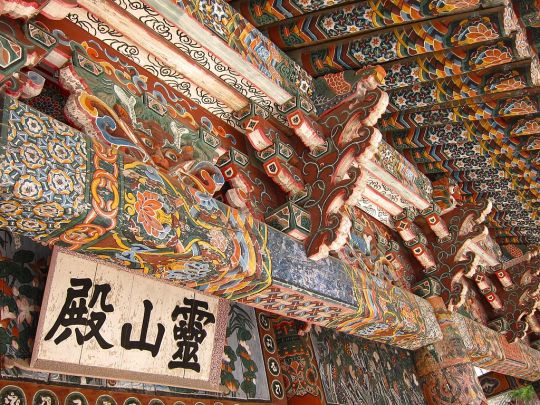
Hamhung, the second largest city in the DPRK.
A coastal city located in the South Hamgyŏng Province. It has long served as a major industrial hub in the DPRK, and has one of the largest and busiest ports in the country.
Hamhung, like most of the coastal cities in the DPRK, was hit particularly hard during the war. Through relentless aerial bombardments, the US and its allies destroyed somewhere around 80-90% percent of all buildings, roads, and other infrastructure in the city.
Now, more than seventy years later, unexploded bombs, mortars and pieces of live ammunition are still being unearthed by the thousands in the area. As recently as 2016, one of North Korea's bomb squads—there's one in every province, faced with the same cleanup task—retrieved 370 unexploded mortar rounds... from an elementary school playground.
Experts in the DPRK estimate it will probably take over a hundred years to clean up all the unexploded ordnance—and that's just in and around Hamhung.
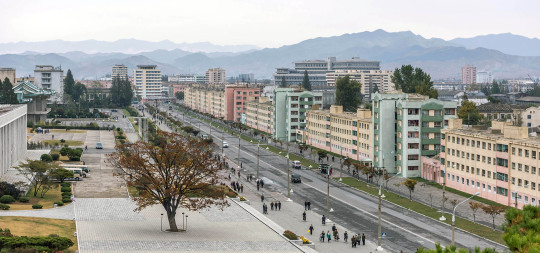
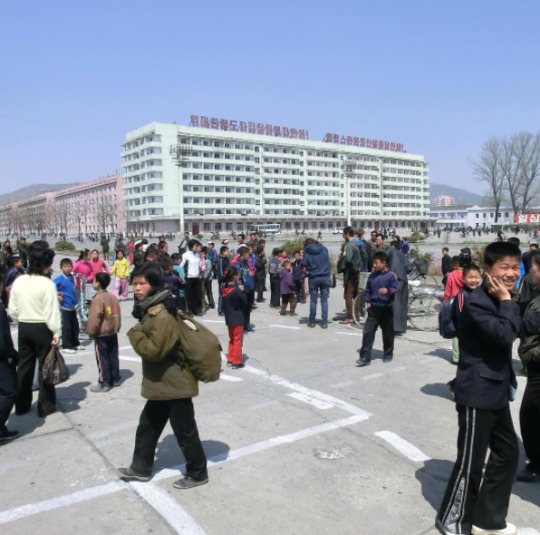
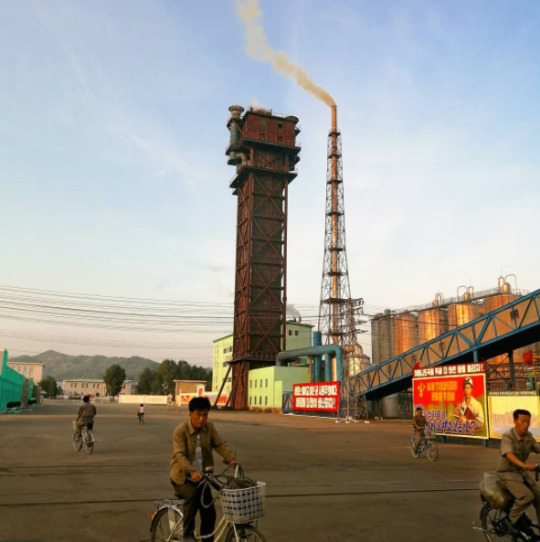
Hamhung's fertilizer plant, the biggest in North Korea.
When the war broke out, Hamhung was home to the largest nitrogen fertilizer plant in Asia. Since its product could be used in the creation of explosives, the existence of the plant is considered to have made Hamhung a target for U.S. aggression (though it's worth repeating that the U.S. carried out saturation bombings of most population centers in the country, irrespective of any so-called 'military value').
The plant was immediately rebuilt after the war, and—beyond its practical use—serves now as a monument of resistance to U.S. imperialism, and as a functional and symbolic site of self-reliance.
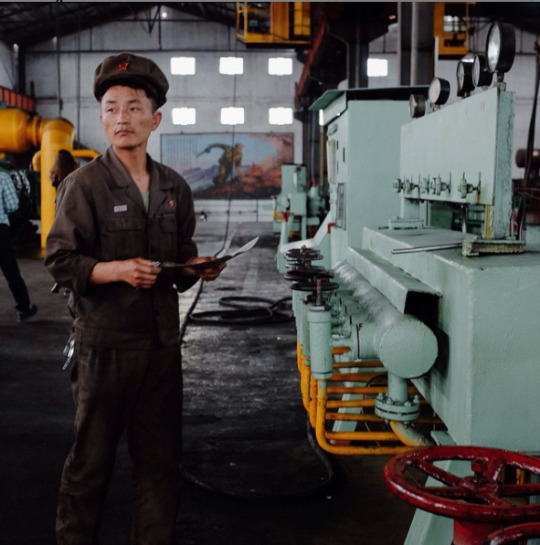
Chongjin, the third largest city in the DPRK.
Another coastal city and industrial hub. It underwent a massive development prior to the Korean war, housing around 300,000 people by the time the war broke out.
By 1953, the U.S. had destroyed most of Chongjin's industry, bombed its harbors, and killed one third of the population.

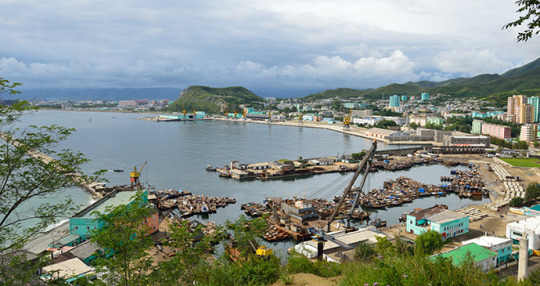
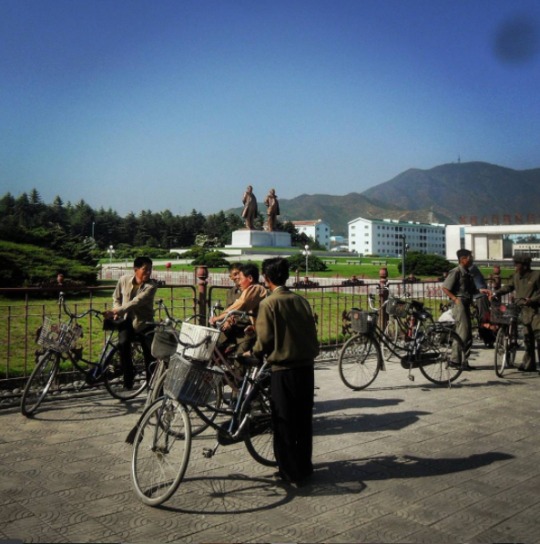
Wonsan, a rebuilt seaside city.
The city of Wonsan is a vital link between the DPRK's east and west coasts, and acts today as both a popular holiday destination for North Koreans, and as a central location for the country's growing tourism industry.
Considered a strategically important location during the war, Wonsan is notable for having endured one of the longest naval blockades in modern history, lasting a total of 861 days.
By the end of the war, the U.S. estimated that they had destroyed around 80% of the city.
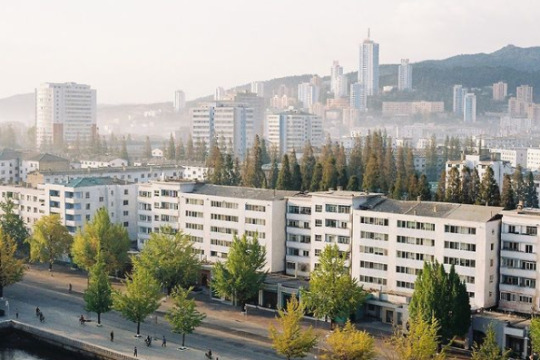
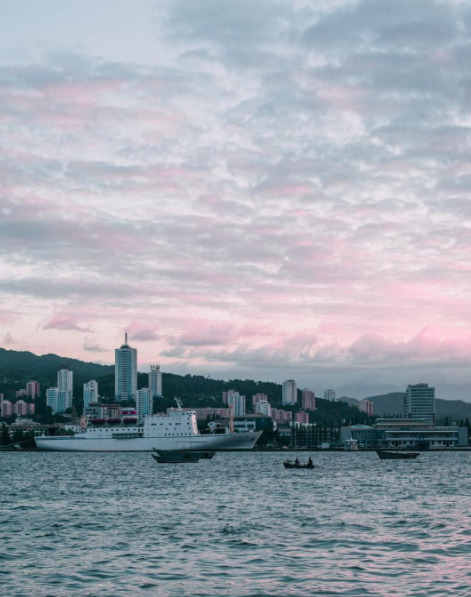
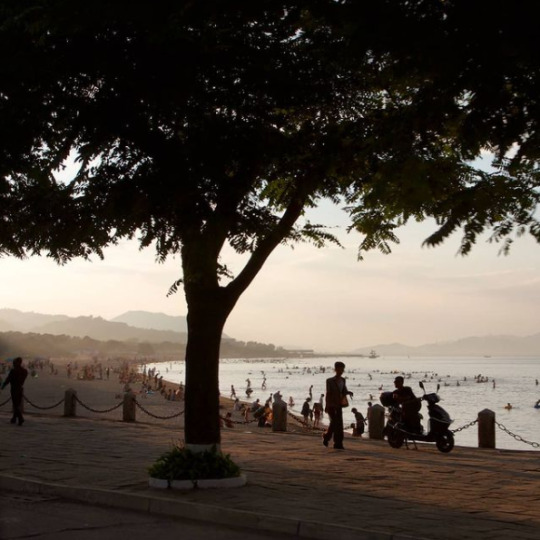

Masikryong Ski Resort, located close to Wonsan. It opened to the public in 2014 and is the first, I believe, that was built with foreign tourists in mind.

Sariwon, another rebuilt city
One of the worst hit cities during the Korean War, with an estimated destruction level of 95%.
I've written about its Wikipedia page here before, which used to mockingly describe its 'folk customs street'—a project built to preserve old Korean traditions and customs—as an "inaccurate romanticized recreation of an ancient Korean street."
No mention, of course, of the destruction caused by the US-led aerial bombings, or any historical context at all that could possibly even hint at why the preservation of old traditions might be particularly important for the city.
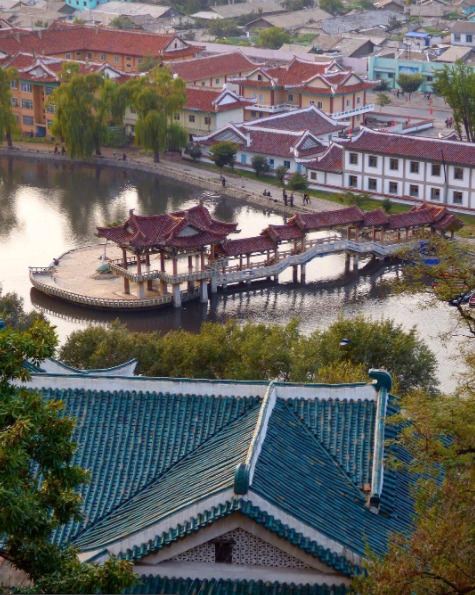
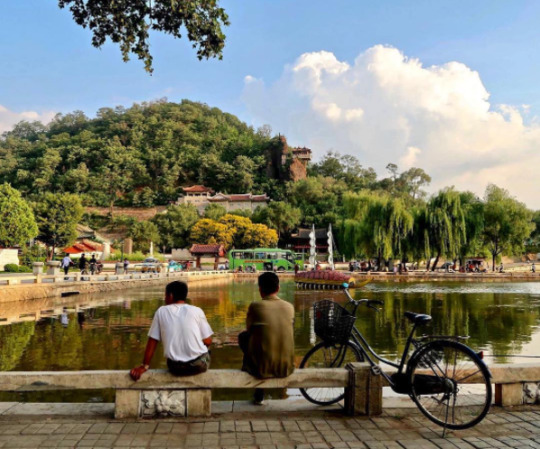
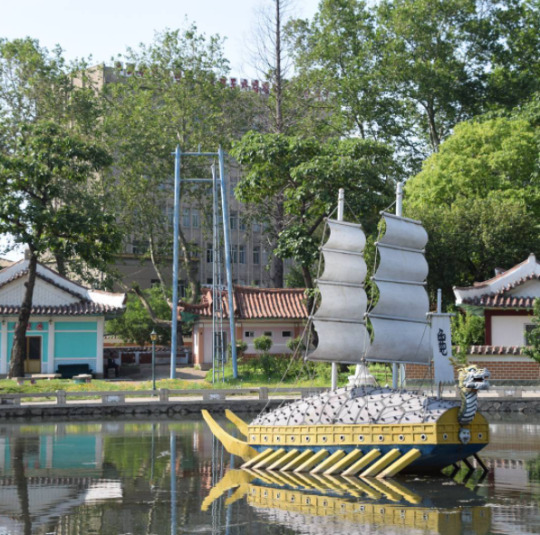
Life outside of the towns and cities
In the rural parts of the DPRK, life primarily revolves around agriculture. As the sanctions they're under make it difficult to acquire fuel, farming in the DPRK relies heavily on manual labour, which again, to avoid food shortages, requires that a large portion of the labour force resides in the countryside.
Unlike what many may think, the reliance on manual labour in farming is a relatively "new" development. Up until the crisis of the 1990s, the DPRK was a highly industrialized nation, with a modernized agricultural system and a high urbanization rate. But, as the access to cheap fuel from the USSR and China disappeared, and the sanctions placed upon them by Western nations heavily restricted their ability to import fuel from other sources, having a fuel-dependent agricultural industry became a recipe for disaster, and required an immediate and brutal restructuring.
For a more detailed breakdown of what lead to the crisis in the 90s, and how it reshaped the DPRKs approach to agriculture, check out this article by Zhun Xu.
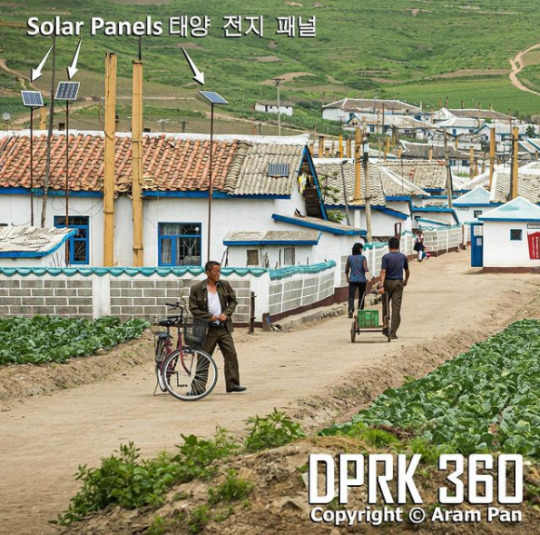
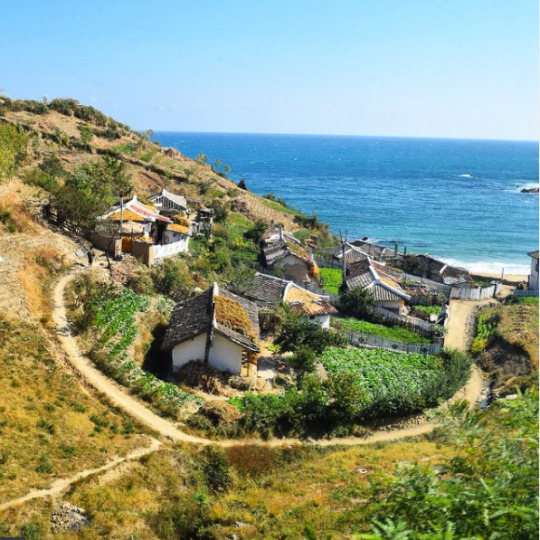
Some typical newly built rural housing, surrounded by farmland.
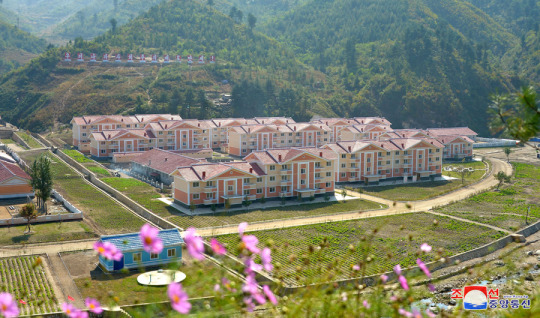
Tumblr only allows 20 pictures per post, but if you want to see more pictures of life outside Pyongyang, check out this imgur album.
#dprk#north korea#i've had this post unfinished in drafts for almost a year#also sorry about the spelling and potential formatting issues it's a nightmare to edit at this point#it was literally just meant to be a collection of picture and then the writing just sort of happened#enjoy the brief heritageposts history lesson i guess
6K notes
·
View notes
Text
it is a little funny, a little ironic, because as much as the Ember Island Players episode wants to be like "see?? you're silly for thinking zuko and katara's dynamic is romantic" it doesn't quite think through the in-world implications of the play because, conceivably, this play is built largely upon rumor, right? biased or purposefully distorted first, second, or third-hand accounts of the gaang and their journey? (and then of course, whatever artistic liberties the play writers want to take)
Because that all begs the question - why do the play writers think zuko and katara are together?? Like literally lmao was it just for the Drama of it all? Or do enough people in the avatar universe perceive Zuko and Katara to be a couple for it to be a far spread rumor?? Is June gossiping in taverns like "oh the fire nation prince? yeah he hired me to find his girlfriend. he had her betrothal necklace and everything"??
And how did the play writers (or anyone for that matter) even know that Zuko and Katara had shared a Moment with one another in the crystal caverns? Were there like, Dai Li Agents spying on them from afar? Watching katara huff and stalk around and yell at zuko then like five seconds later they see her cradling Zuko's face and they're just like "bro" "bro" "no way" "there's no war in ba sing se but we've got to tell people about that."
Then isn't it also implied this play is fairly popular in the fire nation? Like how many years after the war is the average fire nation citizen convinced that Zuko and Katara are an item?
#the episode being like: we'll show those zk shippers by implying that people in their universe constantly mistake them for a couple#that will show them#...and then have June call them a couple AGAIN in the following episode#amazing#atla#zutara
3K notes
·
View notes